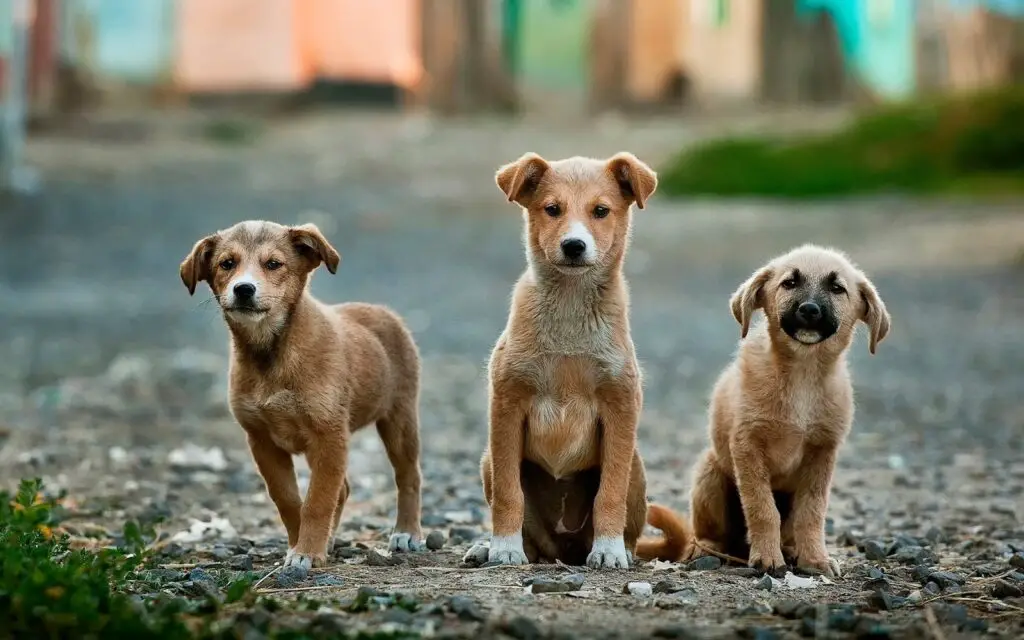What Happens if a Human and an Animal Mate?
- The Biological and Ethical Implications of Human-Animal Mating: An In-depth Exploration
- The Biological Barrier
- Interbreeding in the Animal Kingdom
- Human-Animal Interaction
- Scientific Understanding
- Ethical and Moral Considerations
- Legal Aspects and Regulations
- The Importance of Species Preservation
- The Curiosity Factor
When a human and an animal mate, it is important to note that this is biologically impossible. Humans and animals are different species, and the biological mechanisms that govern reproduction prevent interbreeding between them. Reproductive compatibility is determined by genetic and physiological factors unique to each species.
Species are defined in science as groups of organisms that can interbreed and produce fertile offspring. Humans are members of the species Homo sapiens, whereas animals include a wide and diverse range of species from the animal kingdom. Humans and animals have significant genetic differences, making it impossible for them to produce offspring together.
It is worth noting that different species within the same genus can interbreed in some cases, but these are uncommon and usually involve closely related species. Despite this, due to the vast genetic differences between the two groups, interbreeding between humans and animals is not possible.
Finally, due to biological barriers that prevent interbreeding between species, humans and animals cannot mate and produce offspring together. In most cases, hybridization refers to closely related species, and in the case of humans, reproduction is only possible within the same species, Homo sapiens.

The Biological and Ethical Implications of Human-Animal Mating: An In-depth Exploration
For centuries, the idea of human-animal mating has fascinated and sometimes disturbed human imagination. Stories of humans having romantic or reproductive relationships with animals can be found in folklore, mythology, and even modern popular culture. It is important to note, however, that this concept is biologically implausible and ethically dubious. This topic delves into the biological barriers that prevent human-animal mating and the ethical implications of such ideas.
Biological Incompatibility
A fundamental understanding of biology reveals the insurmountable barriers to human-animal mating:
- Genetic Incompatibility: Humans and animals belong to distinct species, each characterized by a unique genetic makeup. The human species, Homo sapiens, possesses 46 chromosomes, while the chromosome numbers and structures of animals vary greatly across different species. These genetic disparities render interbreeding impossible.
- Species-Specific Reproductive Mechanisms: Reproduction within a species is governed by finely tuned mechanisms. Humans have evolved to reproduce only with other humans, and animals exhibit the same species-specific reproductive processes. Gamete recognition and fertilization mechanisms are tailored to each species, ensuring compatibility only within the same species.
- Rare Instances of Hybridization: While human-animal mating is impossible, rare instances of hybridization do occur among closely related species or subspecies. For example, ligers and tigons are hybrids of big cats resulting from the mating of lions and tigers. However, these cases are exceptional and often a result of human intervention, raising ethical questions.
Ethical Considerations
Beyond the biological impossibility, ethical concerns surrounding the concept of human-animal mating are paramount:
- Respect for Nature: A fundamental ethical principle is respect for the natural world. Attempting to facilitate human-animal mating violates this principle by disregarding the boundaries of species and interfering with natural processes.
- Animal Welfare: Any attempt at human-animal mating would inevitably involve animals, raising concerns about their welfare. Consent, well-being, and the potential harm inflicted on animals must be carefully considered. Ethical treatment of animals should be a top priority.
- Dignity and Consent: The concept of consent is inherently human and cannot be applied to animals in the same way it is to humans. Engaging in activities that blur the lines between species neglects the importance of informed and autonomous consent in human relationships.
- Potential for Exploitation: Pursuing human-animal mating ventures into a realm where animals become subjects of exploitation. Such endeavors can lead to harm and suffering, undermining the ethical treatment of animals.
Ethical Framework
To address these concerns, it is essential to establish a strong ethical framework that guides our interactions with the natural world:
- Respect for Species Boundaries: Respecting the boundaries between species is paramount. Humans should appreciate the diversity of life on Earth without attempting to transcend these boundaries.
- Animal Welfare and Rights: Ethical treatment of animals requires acknowledging their rights and welfare. This includes ensuring they are not subjected to harm, distress, or exploitation.
- Environmental Stewardship: Our relationship with the natural world should prioritize responsible environmental stewardship. Protecting habitats and preserving biodiversity are ethical imperatives.
- Scientific Inquiry and Conservation: While human-animal mating remains a topic of folklore and fiction, legitimate scientific inquiry into animal behavior and reproduction is crucial for conservation efforts and understanding the natural world.
The Biological Barrier
The biological barrier is a fundamental concept in biology that underscores the inability of different species to interbreed and produce viable offspring. This barrier is rooted in the concept of species, defined as groups of organisms capable of reproducing and producing fertile offspring. Species are distinct entities with their own sets of genetic characteristics, and these genetic differences serve as a primary obstacle to interbreeding between species.
At the core of the biological barrier is genetic incompatibility. Each species has a unique genetic code, and this genetic code determines the traits, characteristics, and reproductive mechanisms of that species. When individuals from two different species attempt to mate, their genetic differences result in an inability to produce offspring that can thrive in their respective environments. Incompatibilities at the genetic level often lead to developmental abnormalities or infertility in any resulting hybrid offspring.
Furthermore, the biological barrier is reinforced by differences in reproductive anatomy and behavior. Species have evolved specific reproductive organs, processes, and behaviors that are finely tuned to ensure the continuation of their kind. These adaptations are not interchangeable between species, making it impossible for, say, a human and an animal to successfully mate and reproduce.
Interbreeding in the Animal Kingdom
Interbreeding in the animal kingdom refers to the phenomenon where individuals from different but closely related species are capable of mating and producing offspring. This process typically occurs when two species share a recent common ancestor and still have enough genetic similarity to allow for successful reproduction. Interbreeding can result in the formation of hybrids, which are individuals with a combination of characteristics from both parent species.
One well-known example of interbreeding in the animal kingdom is the hybridization between various species of big cats, such as lions and tigers. When a male lion mates with a female tiger, the resulting offspring is known as a liger, whereas a male tiger and a female lion produce a tigon. These hybrids inherit a mix of traits from their parent species and exhibit unique physical characteristics.
Interbreeding can also occur in birds, such as different species of finches in the Galápagos Islands, where hybridization has been observed due to geographical overlap and mating between closely related species. This phenomenon can have significant implications for the evolutionary process, as it can introduce genetic diversity and potentially lead to the formation of new species over time.
However, it’s important to note that interbreeding is relatively rare and typically occurs between species that are genetically similar. Most species maintain distinct genetic boundaries, preventing interbreeding. The study of interbreeding in the animal kingdom provides valuable insights into evolutionary biology and the complex relationships between species, contributing to our understanding of biodiversity and speciation processes.

Human-Animal Interaction
Human-animal interaction is a multifaceted phenomenon that encompasses various aspects of the relationship between humans and animals. This interaction has been an integral part of human history, with diverse implications for both parties involved.
From a historical perspective, humans and animals have coexisted for thousands of years. Domestication of animals for purposes such as agriculture, transportation, and companionship dates back to ancient civilizations. These interactions have been essential for human survival and development, shaping the course of human history.
Moreover, human-animal interaction extends beyond practical uses. Animals have played significant roles in cultural, religious, and symbolic contexts. They have been revered in various belief systems, serving as totems, symbols of strength, and embodiments of deities.
In contemporary society, human-animal interaction takes many forms. Companion animals, such as dogs and cats, provide emotional support and companionship to individuals and families. Therapy animals contribute to the well-being of those facing physical or emotional challenges. Furthermore, wildlife encounters through ecotourism and conservation efforts have fostered a greater appreciation for the natural world.
However, it is crucial to acknowledge that not all human-animal interactions are positive. Exploitative practices, such as animal testing and unethical breeding, raise ethical concerns and have sparked debates about animal rights and welfare. Balancing the benefits of human-animal interaction with the ethical treatment of animals remains an ongoing challenge.
Scientific Understanding
The scientific understanding of human-animal interbreeding is unequivocal in its assertion that such an occurrence is biologically impossible. This conclusion is rooted in fundamental principles of genetics, reproductive biology, and the concept of species.
First and foremost, species are defined as distinct groups of organisms that can interbreed and produce fertile offspring. Humans belong to the species Homo sapiens, while animals encompass an enormous diversity of species across the animal kingdom. These species are separated by substantial genetic differences that govern their respective reproductive mechanisms. In essence, the genetic incompatibility between humans and animals is a fundamental barrier to interbreeding.
Genetics plays a pivotal role in reproduction. The compatibility of genetic material, including DNA and chromosomes, is vital for the successful fertilization of an egg and the development of a viable organism. The genetic disparities between humans and animals are vast, resulting in incompatible reproductive systems. The genetic code that governs human reproduction is entirely distinct from that of animals, further reinforcing the biological impossibility of interbreeding.
Moreover, reproductive mechanisms in different species have evolved to ensure reproductive success within their own kind. These mechanisms, including the structure and function of reproductive organs, hormonal regulation, and mating behaviors, are finely tuned to the specific requirements of each species. Consequently, human and animal reproductive systems are highly specialized for their respective species, rendering them incompatible for interbreeding.
Ethical and Moral Considerations
Ethical and moral considerations regarding the question of human-animal mating are of paramount importance. This topic delves into the core principles that guide our interactions with the natural world and underscores the need for ethical responsibility in scientific and societal contexts.
First and foremost, the act of human-animal mating raises significant ethical concerns related to consent and harm. Animals cannot provide informed consent, and engaging in such activities with them would be a violation of their rights and well-being. Ethical frameworks such as utilitarianism and deontology highlight the importance of respecting the autonomy and welfare of all beings, including animals. Engaging in non-consensual activities with animals is widely regarded as morally wrong.
Furthermore, human-animal mating challenges our understanding of species boundaries and the preservation of biodiversity. Maintaining the genetic integrity of species is essential for ecological balance and the protection of endangered species. Interbreeding between humans and animals would blur these boundaries, potentially leading to genetic complications and endangering species survival.
Additionally, ethical considerations extend to the potential consequences for the offspring of such unions. The well-being and rights of any resulting hybrid would be a matter of great ethical concern. These individuals would face unique challenges and ethical dilemmas, as they would belong to neither the human nor animal world in a traditional sense.
Legal Aspects and Regulations
It is critical to address the legal aspects and regulations that govern such interactions in the context of human-animal interactions. These laws and regulations are intended to protect and ensure the welfare of both humans and animals, as well as to preserve the integrity of species and ecosystems. The legal framework governing human-animal interactions varies by country but generally follows the same principles.
To begin, laws exist to prevent the illegal exploitation of animals for a variety of purposes such as entertainment, research, and domestication. They define individuals’ and organisations’ animal-treatment rights and responsibilities, addressing issues such as animal cruelty, neglect, and abandonment. These regulations also define the ethical boundaries of animal-based scientific research and establish standards for their care and protection.
Furthermore, legal measures address the conservation of wildlife and the preservation of species. Laws governing the protection of endangered species and their habitats are integral to maintaining biodiversity and preventing species extinction. Activities such as poaching, illegal wildlife trade, and habitat destruction are strictly regulated to safeguard the planet’s ecosystems and the creatures that inhabit them.
In addition to animal welfare and conservation, legal frameworks consider human safety. For example, regulations govern the ownership and interaction with potentially dangerous animals, such as exotic pets or wildlife kept in captivity. These laws are in place to mitigate risks and ensure the safety of individuals and communities.

The Importance of Species Preservation
Species preservation is of paramount importance in the realm of biodiversity and environmental conservation. This fundamental concept revolves around the protection and maintenance of diverse life forms on our planet, both flora and fauna, and plays a pivotal role in sustaining the delicate balance of ecosystems. The significance of species preservation can be encapsulated in several key points.
For starters, species preservation is critical for biodiversity conservation. Biodiversity is the foundation of healthy ecosystems because it allows a diverse range of species to coexist and interact within an ecosystem. Each species plays a distinct role, or ecological niche, in the overall stability and functionality of the ecosystem. The extinction of a single species can upset this delicate balance, potentially causing cascading effects and the extinction of other species.
Second, the preservation of species is critical for scientific research and discovery. Many species, whether plants or animals, have valuable genetic information and unique adaptations that could lead to medical breakthroughs, agricultural improvements, and other technological advances. Furthermore, studying different species elucidates evolutionary processes and ecological relationships, broadening our understanding of life.
Furthermore, the preservation of species is inextricably linked to human well-being. Many of the species we want to protect are either directly or indirectly linked to our food supply, medicine production, and ecosystem services like pollination and water purification. Species conservation ensures the long-term viability of these vital resources, which are critical to our survival and quality of life.
Finally, species preservation incorporates ethical and moral concerns. Many people believe that all species, regardless of their utility to humans, have intrinsic value and a right to exist. It reflects our responsibility as planet stewards to prevent species extinctions caused by human activities such as habitat destruction, pollution, and overexploitation.
The Curiosity Factor
For decades, scientists, psychologists, and educators have been fascinated by the “Curiosity Factor.” It refers to our innate desire to seek out and investigate the unknown, unusual, or even the seemingly impossible. Curiosity often drives people to ask questions that push the boundaries of knowledge, such as “What happens if a human and an animal mate?”
Curiosity is thought to be a fundamental aspect of human nature from a psychological standpoint. It fuels our desire to learn, discover, and understand our surroundings. Curiosity can be a double-edged sword when it comes to unusual or controversial topics like human-animal mating. On the one hand, it has the potential to stimulate scientific inquiry and foster a better understanding of biology and genetics. On the other hand, if not approached with critical thinking and reliance on credible sources, it can lead to the spread of misinformation and sensationalism.
The “Curiosity Factor” is also important in shaping popular culture, where it is frequently a driving force behind the creation of fictional narratives, myths, and urban legends. These stories have the ability to capture people’s imaginations and pique their curiosity, blurring the lines between fact and fiction.
Harnessing the power of curiosity in educational settings can be a valuable tool for engaging students and promoting learning. Teachers and educators can use intriguing questions and topics, such as the one at hand, to pique students’ interest and encourage them to investigate the underlying science and ethics, thereby developing critical thinking skills.
To summarise, the “Curiosity Factor” is a powerful force in human nature that drives us to explore the unknown and question conventional wisdom. While it can lead to scientific discoveries and educational opportunities, it also necessitates a cautious and circumspect approach to avoid the pitfalls of misinformation and sensationalism. Understanding and effectively channelling curiosity can result in a richer and more informed society.
